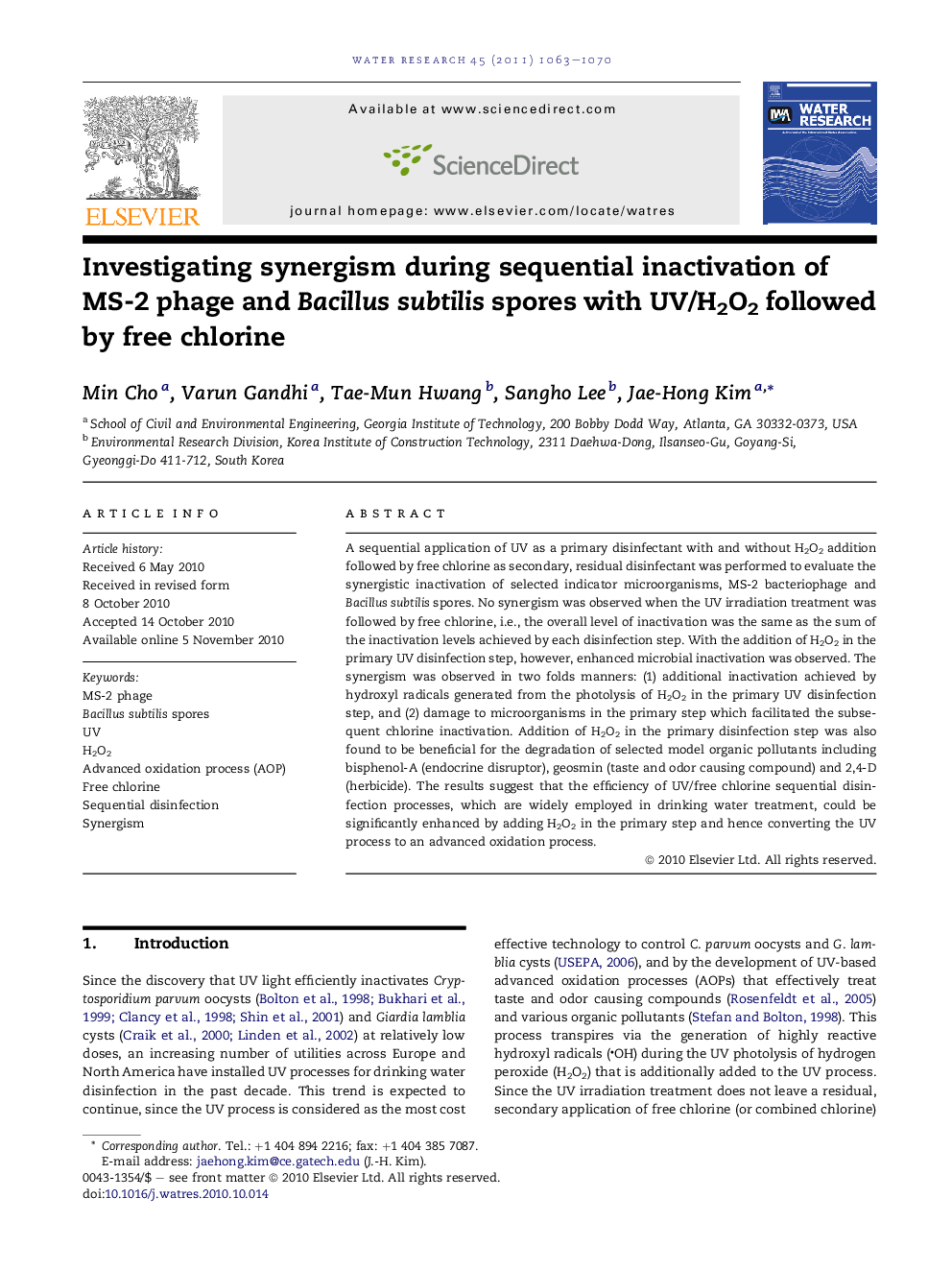| Article ID | Journal | Published Year | Pages | File Type |
|---|---|---|---|---|
| 6368062 | Water Research | 2011 | 8 Pages |
Abstract
A sequential application of UV as a primary disinfectant with and without H2O2 addition followed by free chlorine as secondary, residual disinfectant was performed to evaluate the synergistic inactivation of selected indicator microorganisms, MS-2 bacteriophage and Bacillus subtilis spores. No synergism was observed when the UV irradiation treatment was followed by free chlorine, i.e., the overall level of inactivation was the same as the sum of the inactivation levels achieved by each disinfection step. With the addition of H2O2 in the primary UV disinfection step, however, enhanced microbial inactivation was observed. The synergism was observed in two folds manners: (1) additional inactivation achieved by hydroxyl radicals generated from the photolysis of H2O2 in the primary UV disinfection step, and (2) damage to microorganisms in the primary step which facilitated the subsequent chlorine inactivation. Addition of H2O2 in the primary disinfection step was also found to be beneficial for the degradation of selected model organic pollutants including bisphenol-A (endocrine disruptor), geosmin (taste and odor causing compound) and 2,4-D (herbicide). The results suggest that the efficiency of UV/free chlorine sequential disinfection processes, which are widely employed in drinking water treatment, could be significantly enhanced by adding H2O2 in the primary step and hence converting the UV process to an advanced oxidation process.
Keywords
Related Topics
Physical Sciences and Engineering
Earth and Planetary Sciences
Earth-Surface Processes
Authors
Min Cho, Varun Gandhi, Tae-Mun Hwang, Sangho Lee, Jae-Hong Kim,
